
October 26 marks the 40th anniversary of the 1982 Rainforest Decision by the ALP government of Neville Wran, which resulted in 120,000ha of some of our most important rainforests and old-growth forests on public lands across North East NSW being protected from logging in national parks and flora reserves.

The decision was the culmination of over a decade of campaigning that primarily gained public recognition and support through forest blockades at Terania Creek in 1979 and Mount Nardi in 1982. It was those actions that focused public attention on rainforests, created the need for political resolution, and ultimately stopped rainforest logging in NSW. Forty years later climate heating necessitates a renewed effort to save our rainforests.
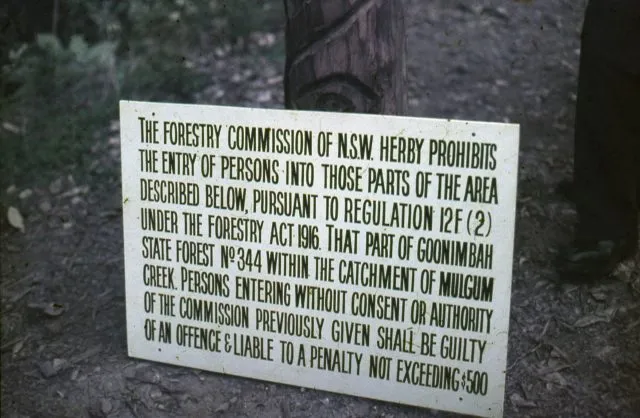
The campaign to save rainforests from logging can be considered to have commenced with the construction of a new logging road into the rainforests of the Wiangaree Plateau (north of Kyogle) in 1972, which galvanised local opposition and garnered support of Sydney conservation groups.
In response to the growing concern, the NSW Forestry Commission agreed to protect the Gradys Creek Flora Reserve in 1973, and for the rest of the rainforest to retain 50 per cent of the canopy when logging.

The campaign continued, with the goal of creating a proposed 33,000ha Border Ranges National Park encompassing the then Wiangaree, Roseberry, and (part) Mount Lindesay state forests. It gained renewed focus in 1975 with proposals to log old-growth Hoop Pine rainforest on Levers Plateau, an area the sawmiller John Lever had refused to log in the 1940s because of its beauty. It became the most controversial environmental issue in NSW.
The May 1976 state election resulted in the Labor Party, led by Neville Wran, being elected with a one-seat majority. While the new government supported the logging, they bowed to community pressure by establishing a State Pollution Control Commission inquiry, and in May 1978 announced their decision to create a token narrow ‘snake-like’ Border Ranges National Park along the border, encompassing Levers Plateau and Gradys Creek Flora Reserve. The catch was the flora reserve was to be revoked and logged before being made into a park.

Meanwhile the Terania Native Forest Action Group (TNFAG) had been formed in 1975 to stop logging of 770ha of old-growth rainforest and wet eucalypt forests in the Terania Creek basin (north of Lismore). Initially the campaign by the TNFAG was dismissed both by Sydney bureaucrats and major conservation groups as being an inconsequential issue of minor significance.
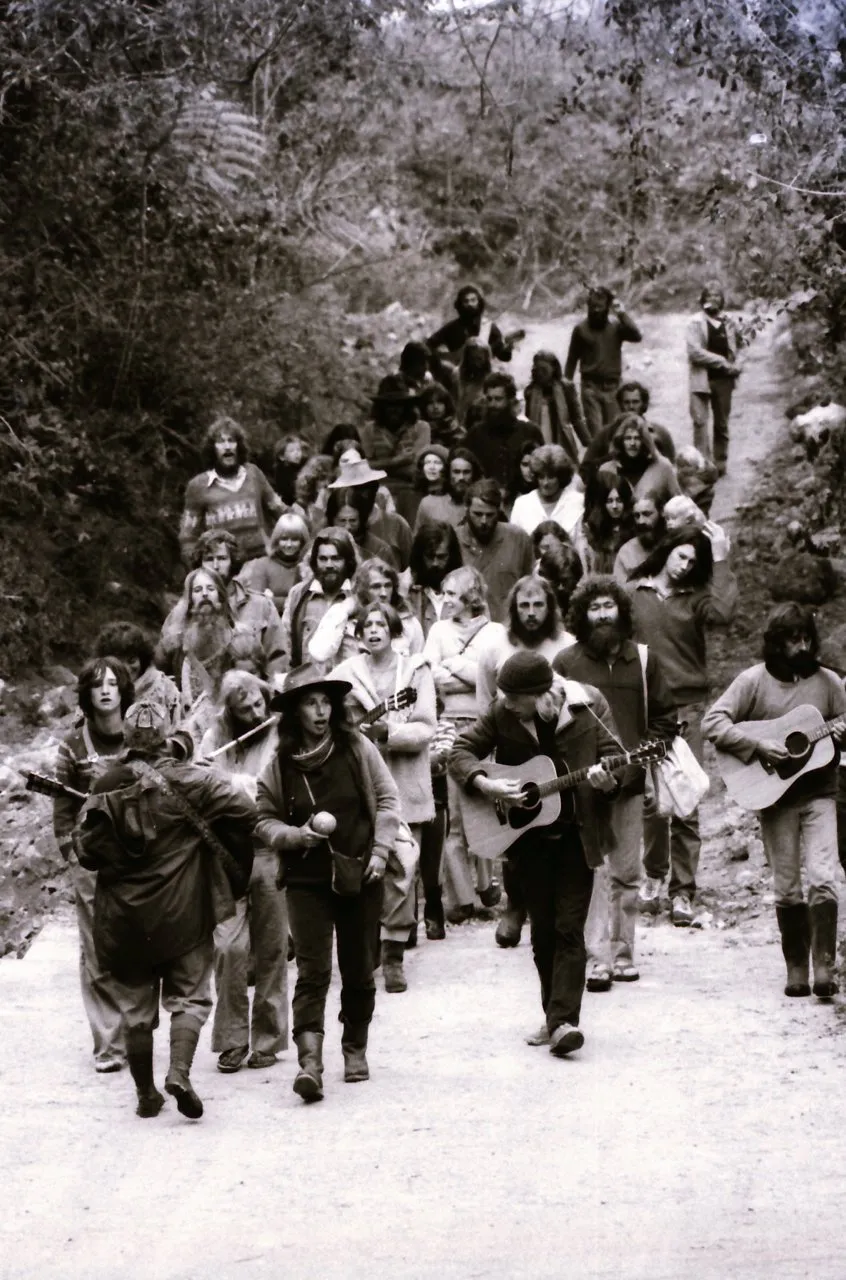
That all changed on 16 August 1979 when, with an escort of 150 police, the loggers attempted to force their way through 200 protesters and begin logging the Terania Creek basin. It was the first forest blockade in Australia. Over a month 41 people were arrested and the protest gained national media attention, making rainforest logging a national issue that could no longer be ignored.
Farther south, the major rainforest and wet forest areas of Washpool, New England, Werrikimbe, and Barrington Tops had been identified as wilderness areas in 1976, and there were campaigns underway to protect them. The rainforest theme united these campaigns, and provided the impetus they needed.
Other major rainforest stands were included as the government considered what to do.

In July 1982, rainforest logging over the ridge from Terania Creek in Griers Scrub (Goonimbah State Forest) incited locals to form the Nightcap Action Group, and initiate a direct-action harassment campaign. When logging moved to Mount Nardi, confrontations escalated. The logging was ultimately stopped by an injunction on 22 October 1982 (Kivi v Forestry Commission of NSW) on the grounds that an Environmental Impact Statement was required before logging rainforest.

A few days later the NSW Cabinet made their historic Rainforest Decision, creating or expanding the Nightcap, Border Ranges, Washpool, Dorrigo, New England, Werrikimbe, and Barrington Tops national parks, creating Mount Seaview and Mt Hyland nature reserves, and the Murray Scrub, Sandy Creek, and Cambridge Plateau flora reserves.
In acknowledgement of the international significance of these rainforests, and to forestall Coalition threats to open up the new parks for logging, they were included on the World Heritage List as the ‘Subtropical and Temperate Rainforests of Eastern Australia’ in 1986.

The Rainforest Decision did not end all rainforest logging, rather the intent was that it be phased out by 1990. Though by then the Coalition was back in power and had no intention to stop rainforest logging until NEFA (North East Forest Alliance) blockades in North Washpool in 1989 and 1990, and a court case, exposed illegal rainforest logging.
Most of our rainforests were cleared; those surviving haven’t yet recovered from 150 years of logging degradation. Their buffers are still being logged, and a new threat became apparent when over a third of NSW’s rainforests were burnt in the 2019–20 wildfires.
Unfortunately we can’t rest on our laurels, as we need to step up once again to save our rainforests, this time from intensifying droughts and wildfires caused by climate heating.













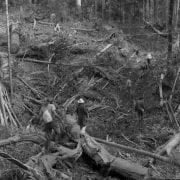




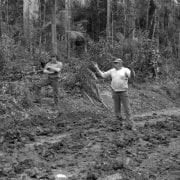
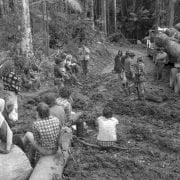


Hugh and Nsn Nicholson, photographed above as a young couple with their children, are still with us. They must be appalled that the logging still goes on. Let’s gather on Wednesday 26th to honour their work and that of many other Protectors. And then, keep up pressure to halt logging our precious forests. Go NEFA!
Many urban locals stalwartly supported these protests over the protection for pristine Levers Plateau & previously logged Terania Creek rainforests, as well as personally appearing at the Judicial Enquiry in Lismore on their behalf.
These included NPA members – especially Peter den Exter – despite local sanctions being applied locally to themselves and their families.
Buit some of us feel ascendant eco-advocacy over practically everything has gone far too far.
It has become a Behemoth, ardently striving to weaken our economy and our Nation at a very difficult time globally.
Oh dear Rob !
You are so ill informed as ever,
The end section of Terania has never been logged, that is one of the reasons we saved it from the industry who hoped to secure six more months of pillage and completely exterminate the last of the ‘Big Scrub’ which did once extend all the way to the coast.
Peter den Exter and his family were much loved community members and many were involved in fighting the fire that so sadly took his life. Kristin , his daughter is an Environmental scientist , who I am sure would be highly affronted by your ignorance.
Also , have a thought if you are capable, if we fail to protect the Ecology, nothing else will exist, not the economy, not the Nation nor you!
Cheers, G”)
Oh dear Ken. So blind to reality. Did you not notice the stumps with board holes near the log landing where the protesters were? Also, if no logging had occurred, why then did forestry open up an old logging road to get to their compartment. Nothing is worse than having to deal with ignorance and lies.
From 1943 to at least 1948, the eastern side of Terania Creek was heavily logged and thousands of super feet of brushwood species were removed for the war effort. Two army huts were erected on site to house the timber workers. Not long after harvesting operations finished, there was a large fire in the area, the last known one in the area. To the locals the area looked like an “unprepossessing mass of undergrowth”. It was a tribute to the forest management that in the space of 30 years, further selective harvesting can occur.